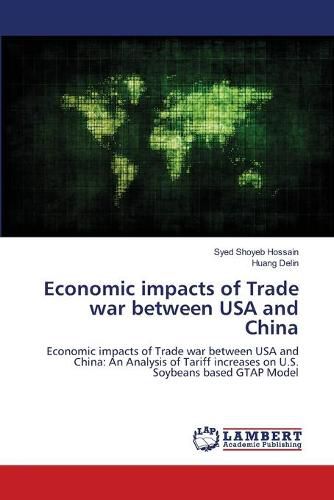Readings Newsletter
Become a Readings Member to make your shopping experience even easier.
Sign in or sign up for free!
You’re not far away from qualifying for FREE standard shipping within Australia
You’ve qualified for FREE standard shipping within Australia
The cart is loading…






This title is printed to order. This book may have been self-published. If so, we cannot guarantee the quality of the content. In the main most books will have gone through the editing process however some may not. We therefore suggest that you be aware of this before ordering this book. If in doubt check either the author or publisher’s details as we are unable to accept any returns unless they are faulty. Please contact us if you have any questions.
China’s soybean demand boom in the past two decades has been very dramatic. It involves socioeconomic and environmental interactions of multi-coupled systems. Economic growth and restructuring of feed industry intensified China’s soybean meal demands. Brazil, as well as Argentina and the US stepped in to satisfy this increased demand. As the largest export-oriented emerging economy, China is more sensitive to tariffs and trade facilitation due to its large trade volume of manufactured goods and primary goods. China imported a large volume of Soybean from USA each year. Trade war between the U.S. and China has increased substantially in the past few months, each country either implementing or proposing a range of tariffs against each other’s imports. Such tariffs would result in higher machinery costs, lower corn, soybean and pork prices. This paper aims to analyze the possible impacts of Donald Trump’s tariff increase against China on global economy. The GTAP model is implemented to analysis the US Soybean tariff increase impact.
$9.00 standard shipping within Australia
FREE standard shipping within Australia for orders over $100.00
Express & International shipping calculated at checkout
This title is printed to order. This book may have been self-published. If so, we cannot guarantee the quality of the content. In the main most books will have gone through the editing process however some may not. We therefore suggest that you be aware of this before ordering this book. If in doubt check either the author or publisher’s details as we are unable to accept any returns unless they are faulty. Please contact us if you have any questions.
China’s soybean demand boom in the past two decades has been very dramatic. It involves socioeconomic and environmental interactions of multi-coupled systems. Economic growth and restructuring of feed industry intensified China’s soybean meal demands. Brazil, as well as Argentina and the US stepped in to satisfy this increased demand. As the largest export-oriented emerging economy, China is more sensitive to tariffs and trade facilitation due to its large trade volume of manufactured goods and primary goods. China imported a large volume of Soybean from USA each year. Trade war between the U.S. and China has increased substantially in the past few months, each country either implementing or proposing a range of tariffs against each other’s imports. Such tariffs would result in higher machinery costs, lower corn, soybean and pork prices. This paper aims to analyze the possible impacts of Donald Trump’s tariff increase against China on global economy. The GTAP model is implemented to analysis the US Soybean tariff increase impact.